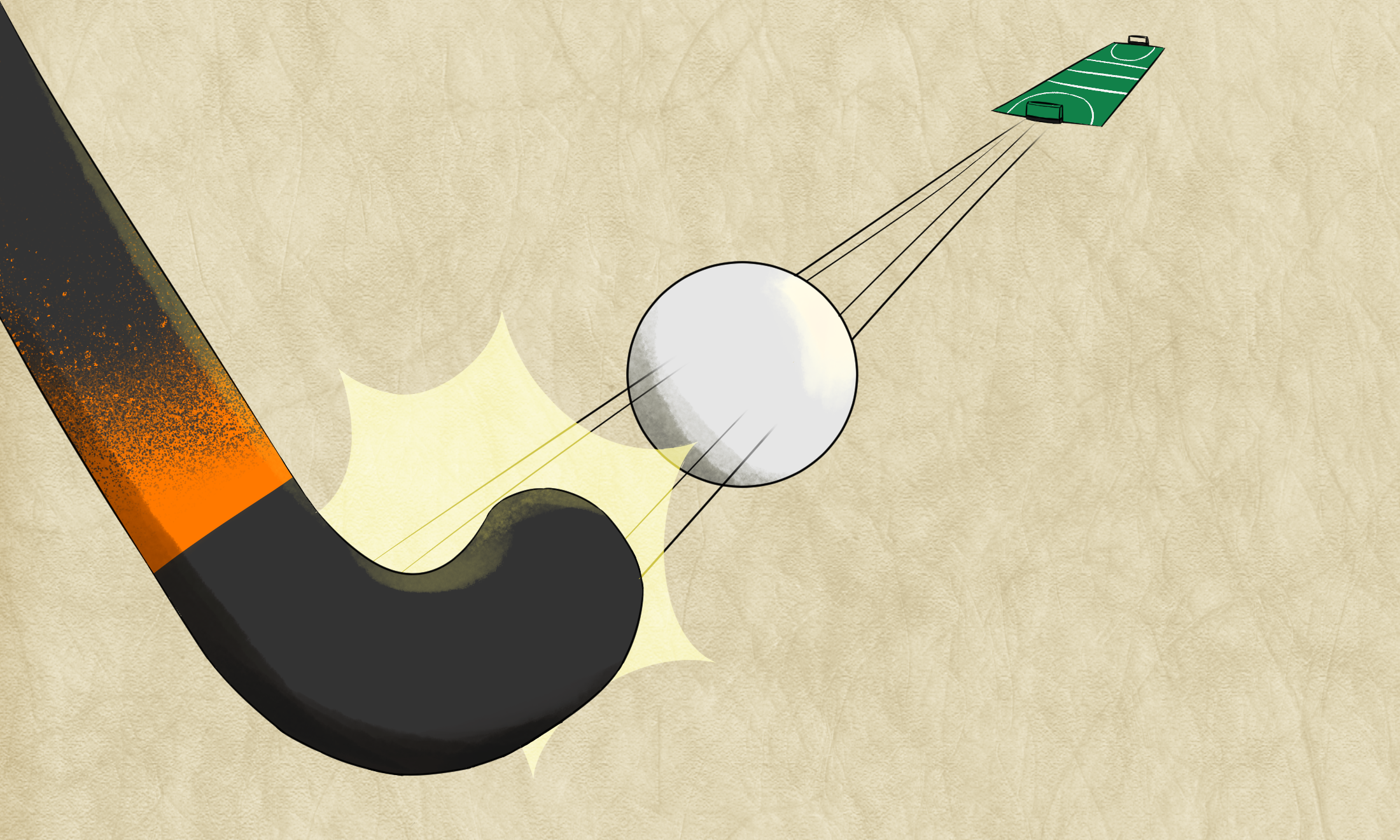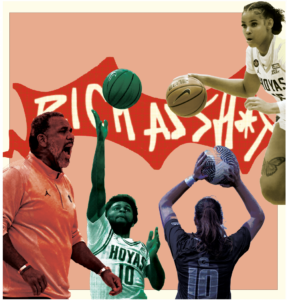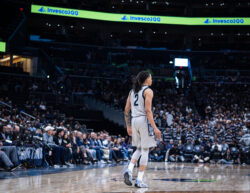Several times a week, hundreds of Georgetown students put down their textbooks, take off their backpacks, lace up their cleats, and step onto the field as student athletes. Varsity athletics are a huge time commitment, but for many at Georgetown, they’re at least convenient. Practice facilities and the home fields for most sports are right here on campus, just a few minutes from dorms and classrooms.
For the last eight years, field hockey was one of those sports. The team moved home to Cooper Field in 2014 after feeling disappointed by student turnout playing at nearby schools the previous eight years. But at the beginning of this season, field hockey again departed—this time, to the field hockey complex of Towson University, a school north of Baltimore.
Sixty-four miles away, this “home” venue is farther from Georgetown than any other Division I team’s home venue is from their campus, according to an analysis conducted by the Voice of all 362 D1 schools and the team sports they offer.
To complete this analysis, the Voice used NCAA records to determine the primary home venue of more than 3,000 teams across the country. Approximately 90 percent of these teams play on their home campuses, but for those that don’t, the Voice recorded the shortest driving distance, according to Google Maps, between the venue and the campus. Driving from Georgetown to Towson’s field hockey complex takes Interstate 95, the D.C. and Baltimore beltways, and a total of 64.7 miles.
That drive is estimated on Google Maps to take anywhere between one and three hours, depending on the time of day. It’s also more than double the next greatest distance the Voice identified: Manhattan College and its new baseball field, Clover Diamond, are 29.4 miles apart. Rounding out the top three longest commutes is the UCLA football team, whose Rose Bowl is 26.2 miles from their campus.
The average distance between campus and venue across all D1 teams, according to the Voice’s analysis, is 0.41 miles. All other field hockey teams travel an average of 0.73 miles to their home venues, making the Towson commute more than 80 times longer than the average field hockey team’s.
Field hockey’s one-of-a-kind move from Cooper Field was motivated by a desire to give players and fans “the complete gameday experience,” head coach Christy Longacre wrote to the Voice via an athletics communications representative.
“This year, we made a concerted effort to play at a facility that has a traditional field hockey AstroTurf surface in an effort to provide consistency for our players throughout the season between practice at Kehoe Field, home games and road games,” she wrote.
Traditionally, field hockey is played on a water-based turf, which has shorter, denser grass and does not require rubber chunks as most turf does. It is kept wet to allow the ball to roll more smoothly and not catch against the stick. Georgetown does not have any water-based turf fields.
According to Melissa Twist, director of field hockey for AstroTurf, a popular turf company, most field hockey programs across D1 use water-based turf. To get the program to meet that standard, Longacre said she and the athletics department looked for nearby colleges with the proper facilities. Unfortunately, Towson was the nearest that was available for this season.
Field hockey, a sport in its 63rd season at Georgetown, is no stranger to changing venues, having played on Kehoe, Shaw, Cooper, and at least three other college campuses over the years. According to a review of field hockey coverage from archived issues of The Hoya, the field hockey team played on campus until the 2000s. Stories from 1965, 1968, 1974, 1976, 1982, 1989, 1993, and 1999 place field hockey home games on Kehoe Field or the neighboring field that is now Shaw Field.
But since the turn of the century, the field hockey team has not always played here at Georgetown. According to records on the athletics website, they played at American University’s field hockey complex at least once in 2002 and consistently from 2009 to 2011. In 2007, 2008, 2012, and 2013, they played at the University of Maryland’s field hockey complex.
Both fields are still in use and have water-based turf. American’s field is 2.7 miles from Georgetown’s campus, and Maryland’s is 13.1.
“We continue to explore future opportunities to play home competitions at those venues,” a university spokesperson wrote.
But even those distances, considerably closer than Towson’s 64.7 miles, have severely limited student attendance in the past.
A January 2014 Voice article reported that playing off campus was disheartening for the players, as only a handful of students made it out to the games. That fall, the team moved back to campus, playing on Cooper.
Longacre wrote that now, in Towson, “attendance has been strong this season and looks very similar to when we played at Cooper Field.” However, estimated attendance at home games on Cooper last year was, on average, 285 people; the average estimated attendance at Towson this season, with one home game remaining, has been 165.
As for student attendance, Longacre declined to answer questions about whether there were any fan buses from campus, and an athletics communications representative did not respond to follow-up questions about the resources available to help interested students get to Towson.
Athletics communications declined to make players available for comment on how the change has affected them and/or the fan atmosphere.
Whether or not the move has impacted play, the field hockey team has struggled this season, with a record of 1-13 as of publication and still searching for a conference win. They’ll have two more chances this Friday, Oct. 20, and the next, before they wrap up the season at James Madison on Oct. 29.
To see the Voice’s full database on all 362 D1 schools and the distance to their home venues, go here.





